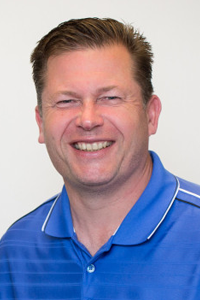The trend in fertilizer application today is to go larger to cover more acreage, provide more flexibility of applications and be more precise, according to manufacturers interviewed at the 2010 Farm Progress Show.
“Everybody’s demanding wider, faster, higher-rate kind of stuff,” says Nick Jensen, president of Thurston Mfg. Co., the manufacturers of Blu-Jet fertilizer toolbars. The company’s new AT6020 60-foot applicator comes equipped with the HDI ammonia delivery system with a double-piston John Blue anhydrous ammonia pump and single heat exchanger that handles 20,000 pounds per hour.
“That system allows us to build toolbars at wider widths and run at faster speeds and that’s what customers are demanding,” Jensen adds.
Bill Preller, director of sales and marketing for Case IH, says they launched the new Nutri-Placer 940 to meet the demands of twin market segments — the custom applicator and the large-acreage farmer, both of whom need to get across a lot of acres.
“If you are a custom applicator, you need high-grade, commercial-grade application equipment because you get paid by the acreage,” Preller says. “If you’re a large farmer and you’re really not interested in getting the local toolbar out of a rental fleet and having to fix somebody else’s problem, you have the same issue. You have a certain number of acres you’ve got to get across in a season.
“So we’re seeing this trend toward higher-acreage, higher-duty cycles and heavier-built construction.”
Not only is the ruggedness and size of the toolbar important, but the timing of the application. Tom Evans, vice president of sales and marketing for Great Plains Mfg., says application is moving toward spring pre-plant and sidedress applications rather than fall applications because the cost of fertilizer is too great to lose to rain events.
“We built the Nutri-Pro in a three-coulter configuration with double row cleaners for spring applications,” Evans says. “It’s like a strip-till machine without the hillers or hippers, but it runs a lead coulter and two trailing coulters that are 4 inches off to each side to till a 12-inch strip. You can put on any source of fertilizer with double manifolds, such as putting P and K in one and N in the other.”
Joe Bassett, director of operations for Dawn Equipment Co., says the ground-engaging units involved in fertilizer application today are being built to provide growers more flexibility with timing of application and source of material.
“You have half the farmers talking about wanting to fall-apply everything and the other half realizing that denitrification was a big issue this year,” Bassett says. “They want to apply more fertilizer when the plant needs it. For us, that translates to flexibility.”
Dawn has launched the model 6000 Anhydra fertilizer unit that can apply anhydrous, dry or liquid, and even has the ability to apply manure.
“The key to profitability for growers in the future is getting the right amount on in exactly the right place at the exact right time, so we are making tools that are really flexible, that open up wider windows of operation, can run in wetter and colder conditions, and can be used with flexibility for both sidedress or as quasi-strip-till devices,” Bassett adds.
Matt Wolters, owner of SureFire Ag Systems, says he sees more growers moving toward at-plant applications of fertilizer. It requires custom modifications to a planter and a setup for a true one-pass system that can handle variable rates of precision-placed fertilizer built on being as efficient as possible.
“Growers are studying a certain system,” Wolters says. “The components of that system are the method and location of placement, and the rate and type of product they will run.
“In order to meet that given scenario, the system has to be configured correctly, and that’s what we do.”






